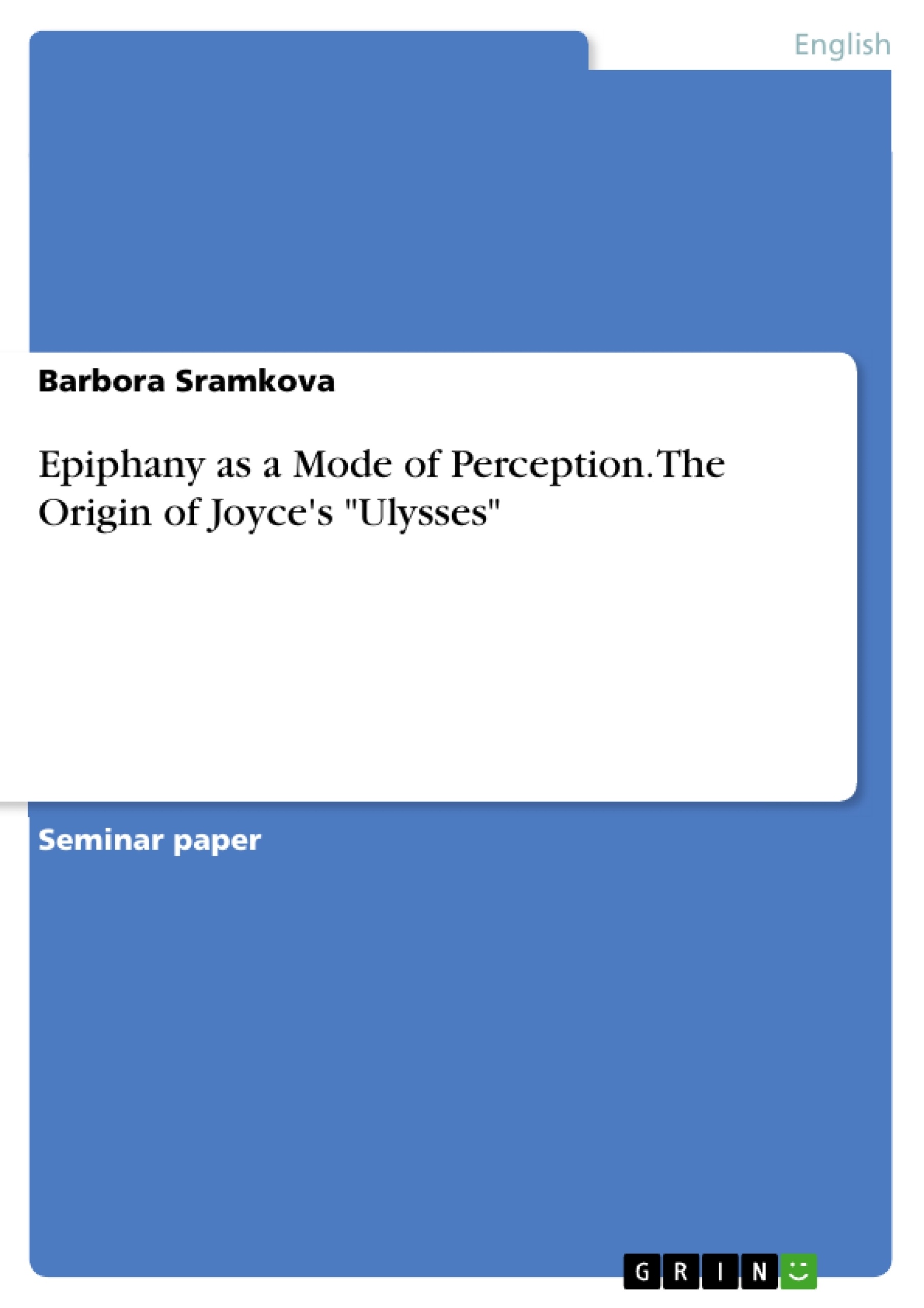How do writers make their figures perceive the world they inhabit? To answer this question would amount to writing a book along the lines of Franz K. Stanzel’s Narrative Situations in the Novel, which is clearly not my ambition. Eve n narrowing the scope down to one writer or even a single book, in the case of Ulysses, it wouldn’t make things much easier. But there seems to be a consensus among Joycean scholars that there is one way typical of Joyce, in which fictional characters can achieve an understanding of their experiences. „Epiphany is the name of the game and there is hardly any reader of Joyce who would not be acquainted with this concept in one way or another. Although no invention of Joyce’s, the word is today associated primarily with him, and has since enjoyed great popularity exceeding the literary context.
In this paper, I will trace the origins of this theory in Joyce’s early writing and examine how it can be applied to Ulysses. I see two approaches to some such undertaking. First, there is the explicit theory that Joyce formulated in what came down to us as the fragment Stephen Hero. Using Stephen as a mouthpiece for his own aesthetic theories, Joyce applies Thomistic aesthetic philosophy to everyday perception of the world surrounding his juvenile alter ego. This theory is later expanded and accordingly modified in A Portrait of the Artist as a Young Man. Rather than relating this theory solely to Stephen and following his artistic and philosophic development in Ulysses, I intend to examine moments that correspond with Stephen’s aesthetic notions, even where other characters, or, perhaps, no characters at all, are involved. In this attempt, I deem it necessary to draw on Joyce’s own collection of Epiphanies, a book not published in Joyce’s lifetime, which was, however, later presented to the public, despite the fact that the extant pieces form only a fragment of Joyce’s original notes. Stanislaus Joyce remarks: „This collection served him as a sketchbook serves an artist.“ Should, or could, these sketches be regarded as Joyce’s theories put into practice? Some motives from the Epiphanies were incorporated into Ulysses, modified accordingly. Even though the „sketchbook“ was exploited to a much greater degree in Stephen Hero and Portrait, the fact that some of the „genuine epiphanies“ found their way into Joyce's writing two decades after they had been jotted down, is significant enough for the correspondences to be examined.
Table of Contents
- Introduction
- Defining Epiphany
- Joyce's Epiphanies
- The „Verbal“ Epiphanies
- The “Sensual Epiphanies
- The “Visionary Epiphanies
- Conclusion
Objectives and Key Themes
This paper examines the concept of "epiphany" as a mode of perception in James Joyce's writing, particularly in his novel Ulysses. It traces the origins of the theory in Joyce's early works and explores how it applies to the novel. The paper focuses on the "subject-object debate" related to epiphany, analyzing the validity and verisimilitude of epiphanic moments in Joyce's works.
- The origins and development of Joyce's concept of epiphany
- The "subject-object debate" in relation to epiphany
- The role of epiphanies in Joyce's early writings and Ulysses
- The distinct types of epiphanies in Joyce's work
- The application of epiphany as a mode of perception in different characters within Ulysses
Chapter Summaries
- Introduction: This chapter introduces the concept of "epiphany" in James Joyce's writing and outlines the paper's objective to explore the origins and application of this concept in Ulysses.
- Defining Epiphany: This chapter examines the etymological and historical background of the term "epiphany," tracing its roots from Greek mythology and its appropriation in Christianity. It also discusses how Joyce applied the concept in his aesthetic theory and personal writings.
- Joyce's Epiphanies: This chapter delves into the origins and development of Joyce's concept of epiphany, drawing upon his early writings and the collection of sketches known as "Epiphanies." It explores the connection between Joyce's theory and Freud's psychoanalysis.
Keywords
This paper focuses on the concept of "epiphany" as a mode of perception in James Joyce's work, specifically examining its application in Ulysses. Key themes include the "subject-object debate," the validity and verisimilitude of epiphanies, and the distinction between different types of epiphanies in Joyce's writing. The paper also analyzes the role of epiphanies in the development of key characters, such as Leopold Bloom and Stephen Dedalus.
- Quote paper
- Barbora Sramkova (Author), 1998, Epiphany as a Mode of Perception. The Origin of Joyce's "Ulysses", Munich, GRIN Verlag, https://www.grin.com/document/34587



